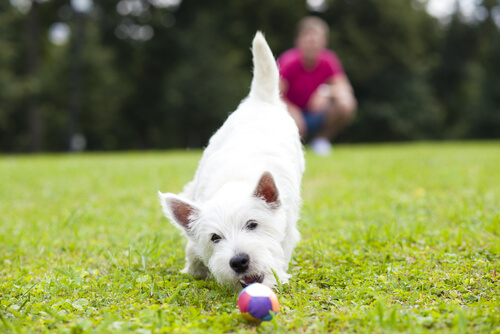Discover the Dangers of Diabetes in Dogs

Although you might have thought this disease only affects humans, diabetes in dogs is actually fairly common. Roughly 1 in 5 dogs suffer from diabetes. And while no dog is immune to developing the disease, there are certain risk factors you should be aware of. We’ll tell you all about them in this article.
Things you need to know about canine diabetes
Just like in humans, canine diabetes is an illness where the body is no longer able to produce or use insulin, the hormone that carries glucose to cells, where it is then converted into energy. This means that the body is unable to regulate blood sugar levels.
While there are different types of diabetes, dogs usually suffer from Type 1 diabetes. This type occurs when the pancreas can no longer produce enough insulin.
If left untreated, this condition can have grave consequences for your four-legged friend. For example:

- Cataracts
- Urinary tract infections
- Inflammation of the pancreas
- Renal disease
- Cushing’s disease
- Coronary issues
- Anemia
- Thyroid problems
No dog is immune from diabetes. However, there are certain factors which can determine whether your dog is at greater risk of developing this disease. We’ll tell you which ones to watch out for.
Discover the main risk factors in dogs
Many people believe that diabetes is more common in older animals, but it can actually develop in dogs of any age. It is usually diagnosed in dogs aged between 7 and 9 years old.
However, there are many other factors which can tell you whether your dog is at greater risk of developing diabetes. For example:
- Obesity
- Unneutered females
- Genes
So, as well as giving them a healthy, balanced diet, it’s important not to overfeed your dog. You also need to make sure that they do enough exercise every day. Remember, modern, sedentary lifestyles are an issue which affects animals as well as people, especially those that live in cities.
And, unless you want your dog to have puppies, it’s best to get them spayed. It will save them from a whole variety of different health problems, including diabetes.
Breeds that have a genetic predisposition to diabetes
There are also some dog breeds which have a genetic predisposition to diabetes. These include:
- Samoyeds
- Pugs
- Dachshunds
- Beagles
- Poodles
- Keeshonds
- Hungarian pulis
- Miniature pinschers
- Bobtails
- Alaskan malamutes
- Schipperkes
- Miniature schnauzers
- Finnish spitz
- Chow chows
- West Highland White terriers
- Cairn terriers
- Dobermans
- Golden Retrievers
- Cocker Spaniels
- German Shepherds
- Labrador Retrievers
Learn to recognize the signs of diabetes in dogs
But how can you tell if your dog has diabetes? Unless you get them tested periodically, dogs only really exhibit the first symptoms when the disease is already fairly advanced. Keep a look out for the following signs in your pet:
- Frequent urination (polyuria)
- Drinking large amounts of water (polydipsia)
- Excessive hunger (polyphagia)
- Weight loss (despite eating a normal amount, or even eating more than usual)
- Inactivity (lethargy)
If you have any concerns that your four-legged friend might be suffering from diabetes, take it to a veterinarian who can run tests, and get it the treatment it needs.
Among the various tests a vet can run to determine whether your pet has diabetes are the Complete Blood Count test (CBC), a chemical profile, and a urine analysis. They can also measure the level of fructosamine, which indicates fluctuations in blood sugar levels over the previous 2 or 3 weeks.
Diabetic dogs can lead perfectly normal lives

If your dog has diabetes, it will probably need insulin shots for the rest of its life. Your vet will also give you advice on how to give your dog the right diet, and an exercise regime to help manage the condition.
But don’t worry! With the right treatment, a diabetic dog has a good chance of leading a normal life.
Regular checkups with a trusted vet will help you give your dog the quality of life it deserves.
This text is provided for informational purposes only and does not replace consultation with a professional. If in doubt, consult your specialist.